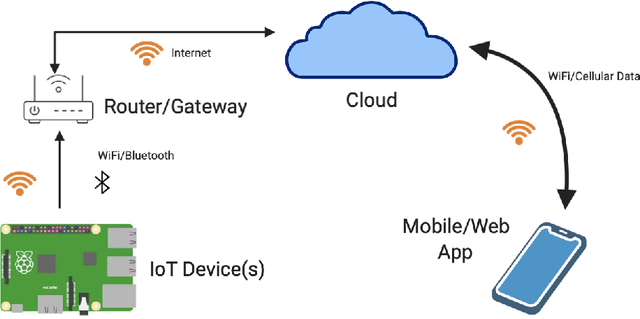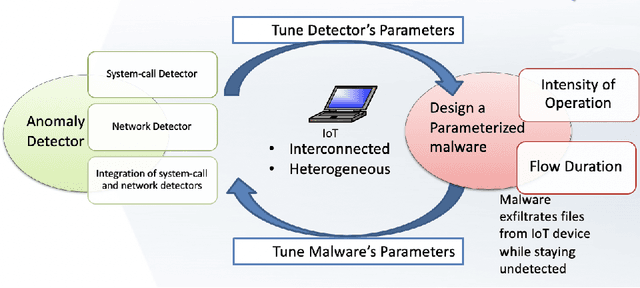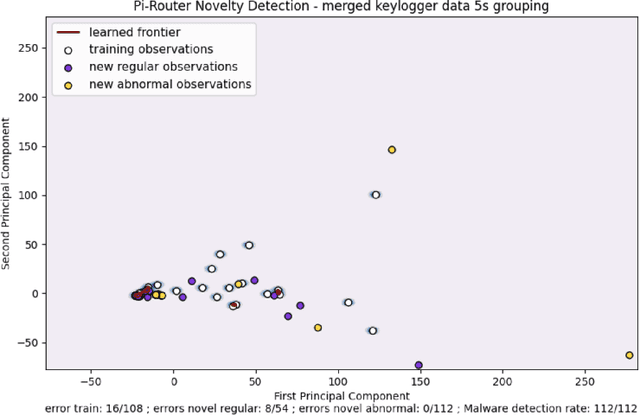Evaluation of an Anomaly Detector for Routers using Parameterizable Malware in an IoT Ecosystem
Paper and Code
Oct 29, 2021



This work explores the evaluation of a machine learning anomaly detector using custom-made parameterizable malware in an Internet of Things (IoT) Ecosystem. It is assumed that the malware has infected, and resides on, the Linux router that serves other devices on the network, as depicted in Figure 1. This IoT Ecosystem was developed as a testbed to evaluate the efficacy of a behavior-based anomaly detector. The malware consists of three types of custom-made malware: ransomware, cryptominer, and keylogger, which all have exfiltration capabilities to the network. The parameterization of the malware gives the malware samples multiple degrees of freedom, specifically relating to the rate and size of data exfiltration. The anomaly detector uses feature sets crafted from system calls and network traffic, and uses a Support Vector Machine (SVM) for behavioral-based anomaly detection. The custom-made malware is used to evaluate the situations where the SVM is effective, as well as the situations where it is not effective.
 Add to Chrome
Add to Chrome Add to Firefox
Add to Firefox Add to Edge
Add to Edge